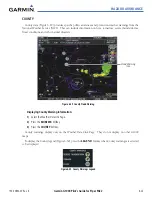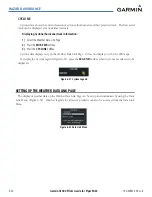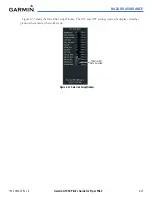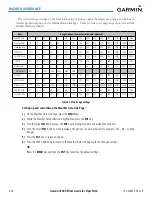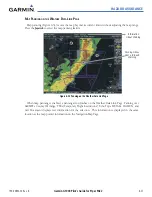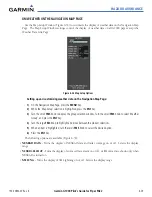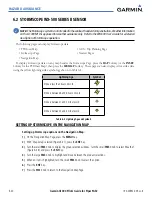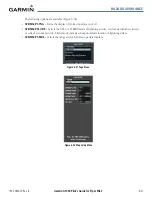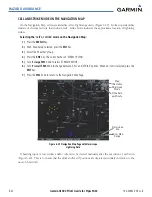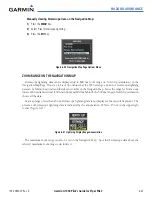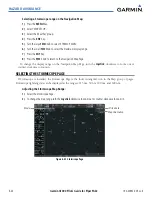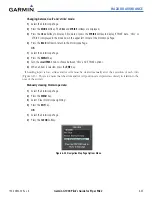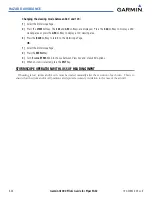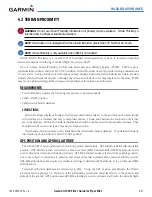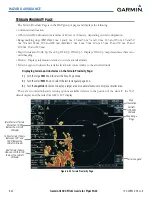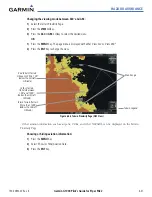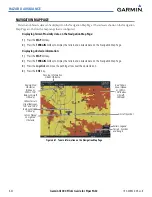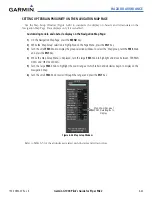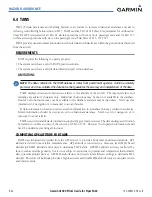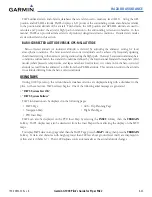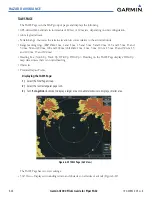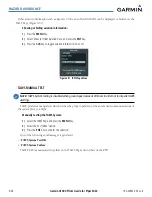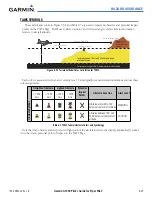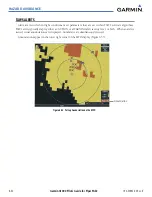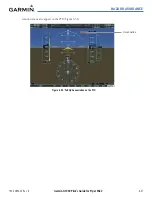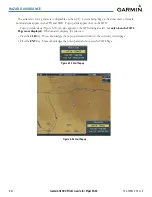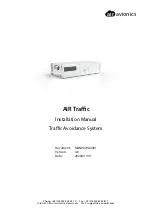
190-00692-00 Rev. B
Garmin G1000 Pilot’s Guide for Piper PA32
6-37
HAZARD AVOIDANCE
6.3 TERRAIN PROXIMITY
WARNING:
Do not use Terrain Proximity information for primary terrain avoidance. Terrain Proximity is
intended only to enhance situational awareness.
NOTE:
Terrain data is not displayed when the aircraft latitude is greater than 75
°
North or 60
°
South.
NOTE:
Terrain Proximity is only available when TAWS is not enabled.
G1000 Terrain Proximity is a non-TSO-C151b-certified terrain awareness system. It increases situational
awareness and aids in reducing controlled flight into terrain (CFIT).
Do not confuse Terrain Proximity with Terrain Awareness and Warning System (TAWS). TAWS is more
sophisticated and robust, and it is TSO-C151b certified. Terrain Proximity does not provide warning annunciations
or voice alerts. It only provides color indications on map displays when terrain and obstacles are within a certain
altitude threshold from the aircraft. Although the terrain and obstacle color map displays are the same, TAWS
uses more sophisticated algorithms to assess aircraft distance from terrain and obstacles.
REQUIREMENTS
Terrain Proximity requires the following components to operate properly:
• Valid 3-D GPS position
• Valid terrain/obstacle database
LIMITATIONS
Terrain Proximity displays altitudes of terrain and obstructions relative to the aircraft position and altitude
with reference to a database that may contain inaccuracies. Terrain and obstructions are shown only if they
are in the database. Terrain and obstacle information should be used as an aid to situational awareness. They
should never be used to navigate or maneuver around terrain.
Note that all obstructions may not be available in the terrain and obstacle database. No terrain and obstacle
information is shown without a valid 3-D GPS position.
GPS POSITION AND GPS-MSL ALTITUDE
The G1000 GPS receiver provides the horizontal position and altitude. GPS altitude is derived from satellite
position. GPS altitude is then converted to a mean sea level (MSL)-based altitude (GPS-MSL altitude) and is
used to determine terrain and obstacle proximity. GPS-MSL altitude accuracy is affected by satellite geometry,
but is not subject to variations in pressure and temperature that normally affect pressure altitude sensors.
GPS-MSL altitude does not require local altimeter settings to determine MSL altitude. It is a widely-used MSL
altitude source.
Terrain and obstacle databases are referenced to MSL. Using the GPS position and altitude, the Terrain
Proximity feature portrays a 2-D picture of the surrounding terrain and obstacles relative to the position and
altitude of the aircraft. GPS position and GPS-MSL altitude are used to calculate and predict the aircraft’s flight
Summary of Contents for G1000:Piper
Page 1: ...Piper PA32...
Page 50: ...190 00692 00 Rev B Garmin G1000 Pilot s Guide for Piper PA32 1 40 SYSTEM OVERVIEW BLANK PAGE...
Page 438: ...190 00692 00 Rev B Garmin G1000 Pilot s Guide for Piper PA32 D 6 APPENDIX D BLANK PAGE...
Page 444: ...190 00692 00 Rev B Garmin G1000 Pilot s Guide for Piper PA32 F 4 APPENDIX F BLANK PAGE...
Page 450: ...Garmin G1000 Pilot s Guide for Piper PA32 190 00692 00 Rev B I 6 INDEX BLANK PAGE...

